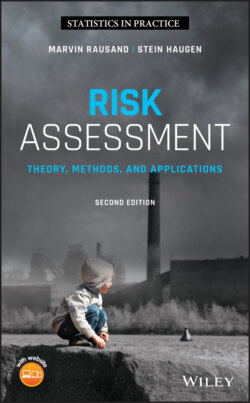Читать книгу Risk Assessment - Marvin Rausand - Страница 51
2.3.4 The Bow‐tie Model
ОглавлениеThe bow‐tie model for risk analysis is shown in Figure 2.2 . An identified hazardous event is placed in the middle of the figure, with the causes shown on the left side and the consequences on the right side. The figure indicates that various hazards and/or threats may lead to the hazardous event and that the hazardous event may in turn lead to many different consequences. Various barriers are usually available between the hazards/threats and the hazardous event, and between the hazardous event and the consequences. The model in Figure 2.2 is called a bow‐tie model because it resembles the bow tie that men sometimes use in place of a necktie with a formal suit. The bow‐tie model is a useful illustration of both conception and analysis of risk.
Many of the concepts that are introduced in this section can be illustrated in the bow‐tie diagram. An accident scenario, involving the identified hazardous event, is shown as a path from left to right. The sequence of events is started by an initiating event and is terminated by a specific end event that causes an end state. The end state will lead to consequences for one or more assets. The path of the accident scenario is diverted (i.e. changes state) by the action of barriers and hence, the steps of the path indicate the presence of barriers. All the possible accident scenarios involving the specified hazardous event can, in principle, be represented in the same bow‐tie diagram. If we are able to identify all relevant hazardous events, we can, in principle, identify and describe all relevant accident scenarios by using bow‐tie diagrams. This makes the bow‐tie model a practical and efficient tool for risk analysis.
Figure 2.2 An accident scenario and related concepts illustrated in a bow‐tie diagram.
